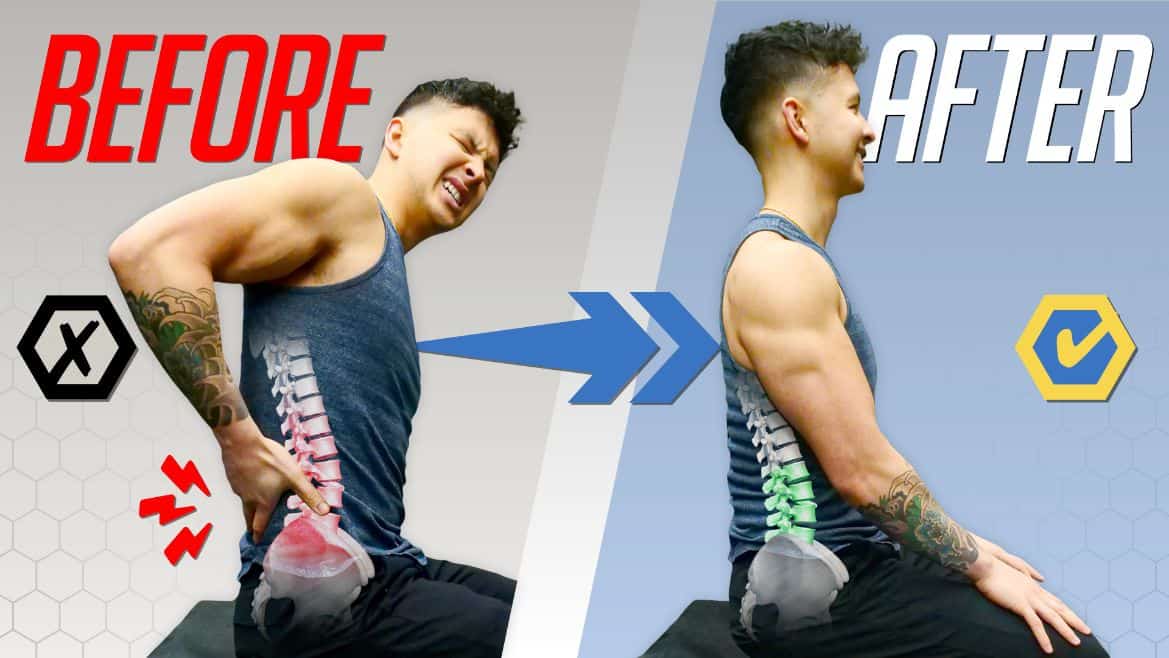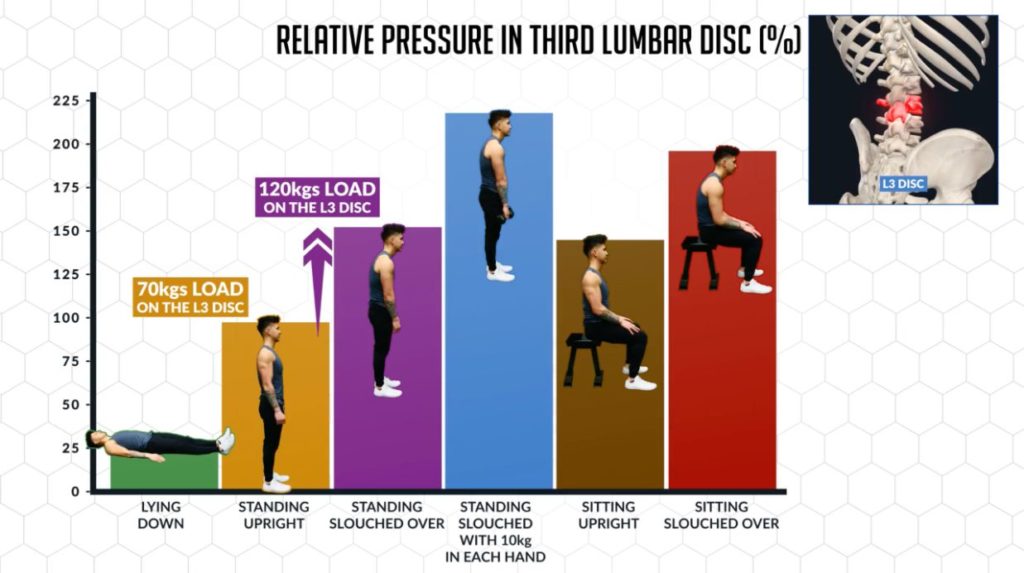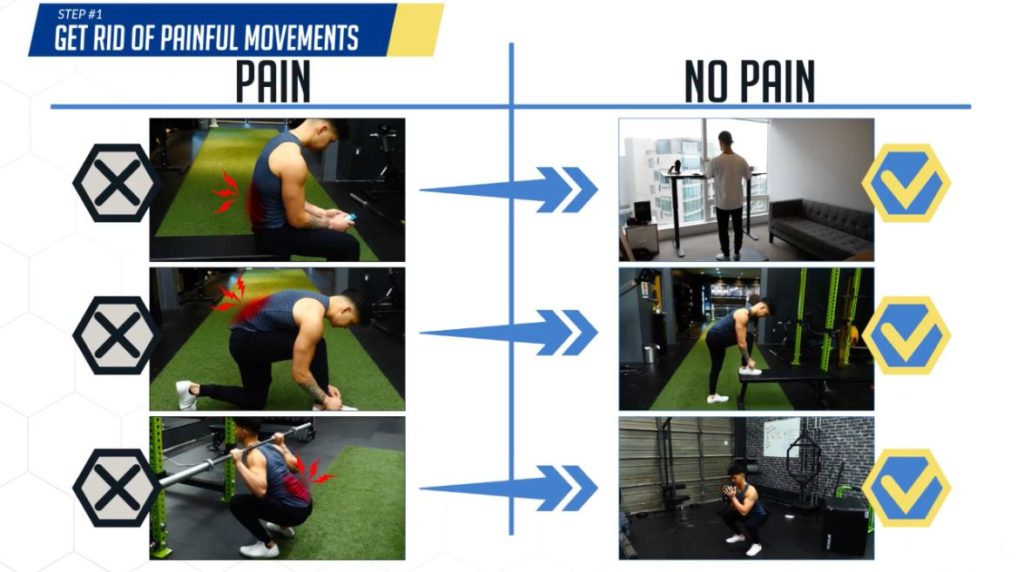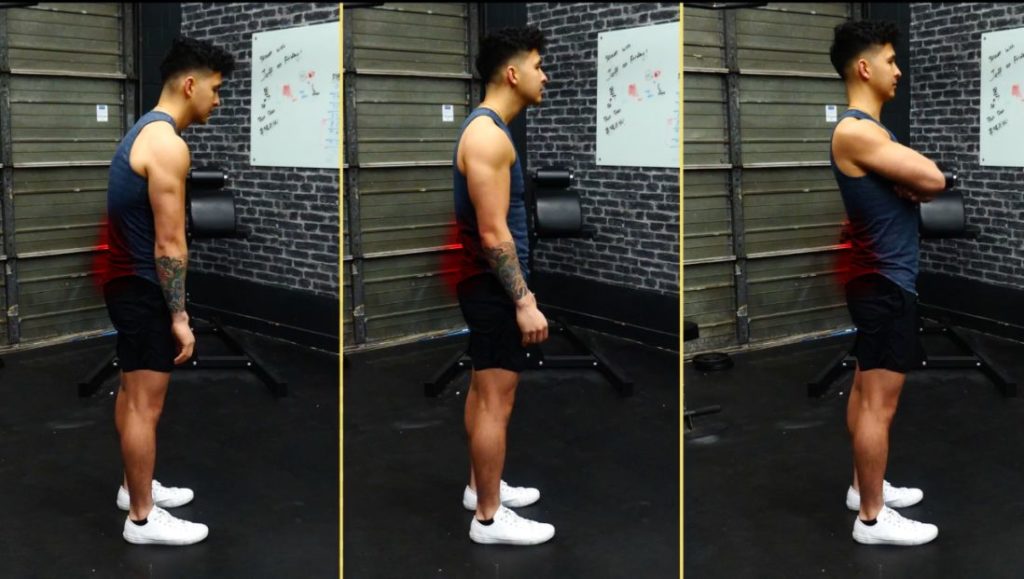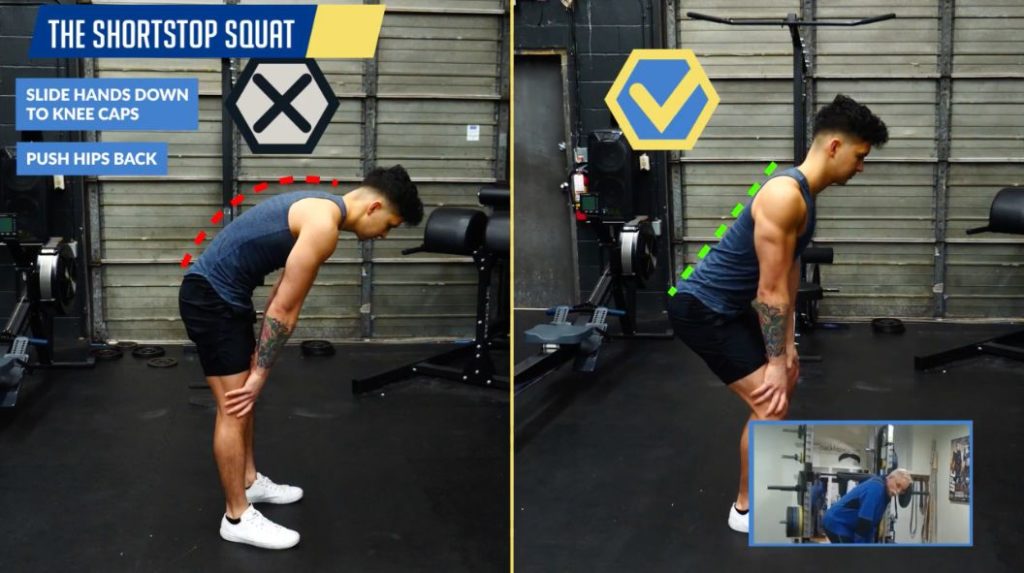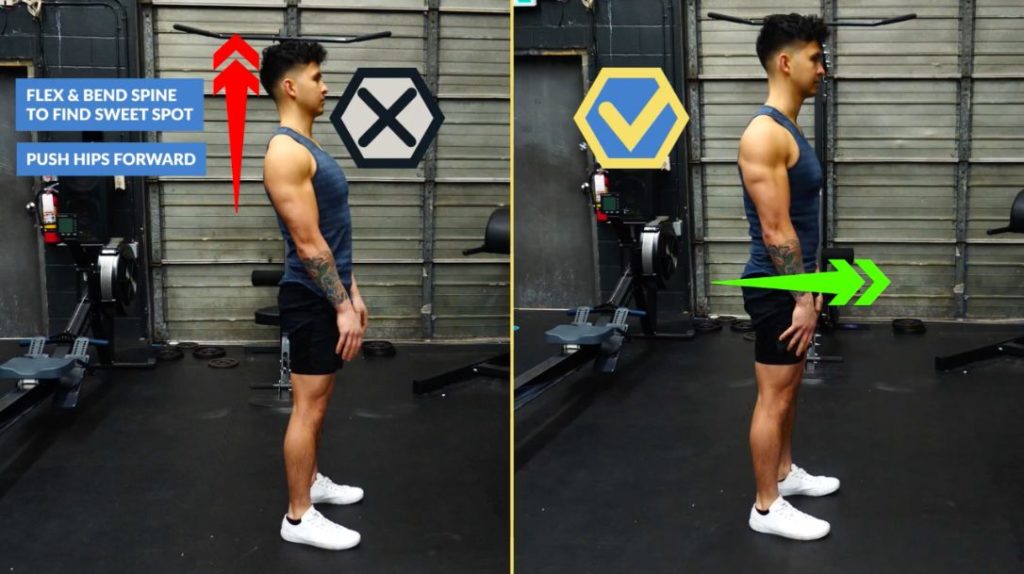The EASIEST Way To Fix & Prevent Lower Back Pain (FOR GOOD!)
Trying to cure your lower back pain with lower back stretches, strengthening exercises, pilates, abs workouts, or just lying in bed until it subsides often does more harm than good. In this article, find out one of the best ways you can truly fix lower back pain - for good.
Here's the truth. There is no quick fix/treatment/remedy for lower back pain. And the overwhelming amount of poor “solutions” out there just worsen the problem. Often times, trying to cure your lower back pain with:
- Lower back stretches
- Strengthening exercises
- Pilates
- Abs workouts OR
- Just lying in bed until it subsides
...Often does more harm than good. These methods may provide some form of relief in the short term for sure, but the pain soon returns. And often worse than before.
A short note before we begin: as the saying goes, prevention is always better than cure. That's why I design every BWS program carefully to ensure that it will cause additional stress to your spine - which can worsen lower back pain. If you're interested in transforming your physique in the most time-efficient and safe manner:
Click the button below to take my analysis quiz to discover the best program for you:
↓
Pay Attention To Your Spine's Position To Prevent (And Fix) Lower Back Pain
Admittedly, the true “fix” to back pain is highly individual. Regardless. One of the easiest ways that we can potentially fix our low back pain, or at least provide some relief or prevent lower back pain from developing in the future, is by paying attention to the position of our spine throughout the day.
For instance, let’s take a look at the results of this research paper. Researchers analyzed the stress placed on the discs of the lower back in various positions - with standing upright used as the reference.
As you can see in the following graph:
- Simply bending forward into a slouched posture increased the relative load on the spine by almost 50% (70kgs load on L3-disc to 120kgs load on L3-disc)
- Sitting in a slouched posture increased the relative load on the spine by about 50% as well
The study also analyzed lifting a 20kg object with poor form. And the results were even worse. When subjects lifted a 20 kg object by bending over at their backs, the load on the spine increased by almost 150 kgs when compared to lifting the right way by bending at the knees and hips and keeping the back neutral!
The researchers also stated that this spinal load would be increased significantly more had the subjects not been of a slim build and instead much heavier.
The Daily Stress On Your Spine Compounds And Can Contribute To Lower Back Pain Over Time
All this helps illustrate the importance of proper spinal hygiene throughout the day. Why? Well, because the gradual wear and tear of the discs add up. And can over time contribute to disc bulges and lower back pain.
World-renowned back pain researcher Dr. Stu McGill explains this quite well with a simple analogy. The spine can be thought of as a wire coat hanger. If you constantly bend the hanger back and forth over and over, eventually it will fatigue and break. The spine experiences the same cumulative effect with repeated bending.
Meaning that if you:
- Are currently suffering from chronic back pain OR
- Experience acute episodes of back pain OR
- Would like to minimize the risk of developing low back pain in the future
...Then moving in the most spine conserving way possible is the key.
Fix/Prevent Lower Back Pain By Moving In The Most Spine-Conserving Way Possible
We can implement this in 3 steps.
Step 1: Get Rid Of Painful Movements
The first step here is just to define the various movements that cause lower back pain for you throughout the day. If certain postures or movements like:
- Sitting for prolonged periods
- Tying your shoes OR
- Performing a specific exercise in the gym induces pain
...Then identify these lower back pain causes and avoid or modify them to make them pain-free. By eliminating these painful movements, you’ll be able to reduce the cumulative load placed on your spine. And can slowly teach your spine how to move pain-free again.
Step 2: Find The “Sweet-Spot” Posture
The next step is to now modify your posture throughout the day. This helps further minimize the stress placed on your spine. And most of this has to do with increasing your awareness. To illustrate this, here’s a simple self-assessment created by Dr. Stuart McGill that you can do when standing to find the optimal posture for you and your spine:
- Stand in a relaxed upright posture and feel your lower back muscles with your hand
- Lean back slightly until these muscles shut off and feel soft and relaxed
- Now slowly lean forward until you identify the point at which they become active and hard again
Note that it may take a few passes to detect this muscle “switch point”. But is worth it. The objective is to discover the position that allows you to maintain an upright standing posture without engaging your low back muscles. You’ll also notice that rounding your shoulders, sticking your head forward, or crossing your arms in front of your body will all cause unwanted muscle tension in the low back.
This simple drill demonstrates how important proper standing posture is to relax your back muscles, and the same applies to sitting. Be aware of your posture throughout the day. And modify it to minimize the stress placed on your spine.
Can't find that sweet spot no matter how hard you try? Don't worry. The team here at BWS (along with myself) have successfully coached many like yourself - and are confident that we'll be able to help you achieve a proper posture in your daily life. If you'd like to fix your lower back pain once and for all (and achieve your dream physique in the most time-efficient way possible):
Click the button below to find out more about the 3-on-1 coaching program:
↓
Step 3: Master The Hip Hinge
The third step is to now modify how you bend over to perform daily tasks. These include things like tying your shoes, picking up an object, or even performing a lift in the gym. To do so, you need to unlearn many of the bad habits you’ve likely developed over the years that involve rounding at the back. Instead, implement what’s called a hip-hinge. This movement will be your basic tool for anything to do with lifting or bending over.
Use The 'Short Stop Squat' To Learn The Hip Hinge Movement
To help learn this, here’s a helpful recommended and used by Dr. Stuart McGill called the “short stop squat”:
- Begin by standing upright with your feet spread shoulder-width apart
- Place your hands on your thighs
- Keeping your spine straight, and bending at the hips, slide your hands down your thigh while moving your hips back behind you until you have lowered yourself to a point where the thumb crotch of each hand can be placed around and atop the kneecap
- At this position, your knees should fall in line mid-way between the heels and toes
- Work at adjusting the curvature of your spine to a pain free or “sweet spot” posture
- To prepare to ascend back up, begin by stiffening your torso by applying the abdominal brace
- Then push your shoulders down and away from your ears by using your pecs and lat muscles to transmit your weight onto your knees
- Now concentrate on pulling the hips forward while maintaining a stiff back, as you draw your hands up the thighs.
Take note that motion should only occur at the hips. Avoid the common hip hinge errors of moving the knees forward, slouching over, or lifting up with your back. These mistakes will all place more stress on your back.
Make Use Of This Hip Hinge Movement In Your Daily Life (Tasks/Lifting)
Essentially every time you sit, stand, reach for something low you’re performing a variation of this movement. Whether it be picking something up off the ground or simply bending down to pat your dog, practicing this proper technique ensures that you’re able to complete any of these tasks without placing added strain on your spine.
The same applies to lifts in the gym as well. Too many times people will place a great deal of stress on their backs and seriously hurt themselves when they don’t apply this simple hip hinge movement pattern properly. This is seen especially with moves like the deadlift, where lower back pain after is common.
Before lifting the weight, stabilize your back by applying the abdominal brace and twisting the bar to engage the lats. Then, don’t lift with your back. Instead, focus your attention on simply pulling the hips forward and dragging the weight up the thighs. It's essentially just like we did with the short stop squat, but now with added load.
Lower Back Pain Recovery And Prevention: Takeaway
So, as a summary, regardless of what caused your back pain, part of your road to recovery and prevention will always be practicing spinal hygiene. By properly implementing what we went through in this article into your daily routine, while making an effort to simply move more and avoiding any static positions for too long, you’ll successfully be able to minimize the stress placed on your lower back and the pain you may be experiencing.
At the same time though, just keep in mind that back pain is specific to you and your situation. There isn’t a general fix for everyone. And spinal hygiene is often just part of the solution.
Luckily, Dr. Stuart McGgill has created a book, Back Mechanic, that guides you through a self-assessment. And then teaches you a solution matched to your specific pain. I’ve personally read through it and would highly recommend it. Once out of pain, he also has other books that can help you then focus more on performance. Here’s the link to his books if you’re interested!
And for those looking for a complete step-by-step program that uses science to show you how to properly train AND eat week after week to transform your body in the most efficient and injury-free way possible, then:
Click the button below to take my analysis quiz to discover the best program for you:
↓
Anyways that’s it for today guys! I hope you all enjoyed it! Don’t forget to give me a follow and connect with me on Instagram, Facebook, and Youtube as well, in order to stay up to date with my content.






